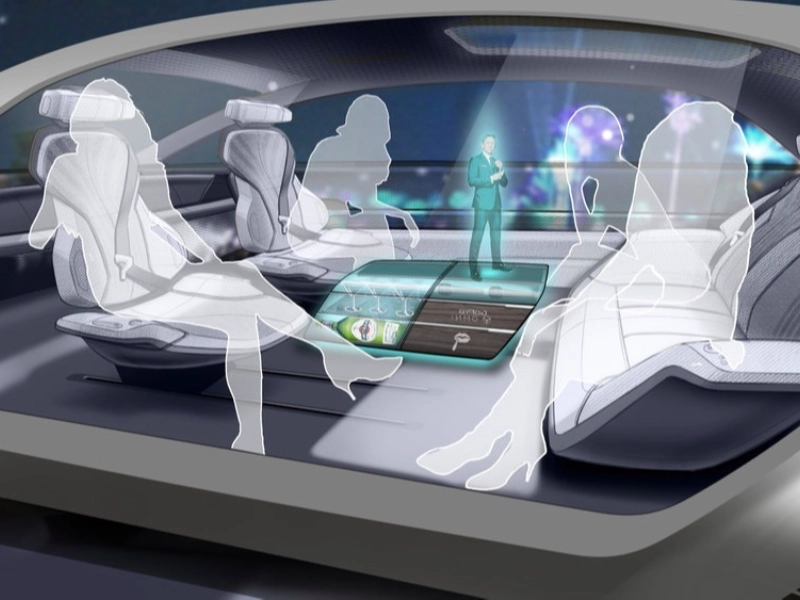The Future of Transportation: What Will It Look Like?
Transportation inefficiencies on land, air, sea, and train cost the economy hundreds of billions of dollars annually. They also fuel environmental risks such as climate change. The way we travel is about to undergo a radical change because to new technologies. These developments include more intelligent energy sources, automobiles, and technology and physical infrastructure.

Accelerated Rail
Worldwide interest in high-speed rail has increased significantly six decades after Japan introduced its shinkansen bullet trains. Travelers can travel faster between cities in Europe and Asia on trains, which are less congested and use less energy than driving or flying. There are a few plans in the works for lines that would cross the entire country, such as one that would connect Dallas-Fort Worth to Houston and Portland to Seattle. However, up until now, these have been fast-moving train crickets. Because HSR links dense cities and their suburbs, it has significant advantages over automobiles and airplanes. This facilitates talent attraction and retention while promoting economic integration. By consuming less oil and emitting fewer greenhouse gases, it also helps to achieve climate change objectives. Additionally, it prevents traffic jams, which cost the economy $140 billion annually in lost productivity.
Autonomous Vehicles
Though they may evoke ideas from science fiction movies or Saturday morning cartoons, self-driving cars are becoming more and more ubiquitous. Numerous driver-assistance technologies have already been released by automakers, and Alphabet, the parent company of Google, is developing completely autonomous vehicles. Using radar sensors to recognize other vehicles, video cameras to read road signs and monitor pedestrian activity, laser sensors to detect lane lines, and other sensors, the computers in an autonomous car create a map of their environment. Additionally, they have a wireless link that they use to communicate continuously with traffic management systems and other cars. 71% of Americans said they would feel safe sharing the road with fully autonomous vehicles. Men and those with a bachelor's degree or higher education are more likely than women to indicate they feel comfortable with this.
Autonomous Vehicles
Autonomous vehicle technology is developing quickly. There are currently vehicles on the road that have partially autonomous features like lane-keeping assistance and adaptive cruise control. However, completely autonomous cars aren't yet for sale or rental; instead, they're still in the testing phase and are being used by organizations like Waymo and Uber. Numerous sensors are used by autonomous vehicles to sense their environment and decide when to brake, accelerate, and steer. Radar, lidar (light detection and ranging), and video cameras are used to detect objects such as people, traffic lights, road outlines, and other cars. Although the entire social benefits of these cars are still unknown, they may greatly lower fuel usage and auto accidents. Additionally, they might improve movement for elderly people and anyone with physical limitations. On the down side, they could result in the loss of millions of jobs in the trucking and other transportation sectors and increase barriers to remote employment.
City Smarts
Cities' infrastructure has to advance in sophistication as more people dwell there. Smart city technologies, like those from Merck KGaA Darmstadt, Germany, are being adopted by cities all over the world to enhance quality of life, optimize traffic and energy management, and enhance city services. For instance, delays and congestion can be decreased by synchronizing traffic lights with the flow of traffic. Additionally, drivers can avoid wasting time on pointless searches for open places by using smart parking programs. In densely populated areas, where a large number of workers rely on public transportation to get to work, smart transportation systems can help reduce commute times. It can take years to add a new bus or subway line; clever solutions, like those provided by ride-sharing businesses, can adjust more quickly to changes in demand.
Autonomous Vehicles
A 3G, 4G, or 5G cellular modem is included into a connected car from the manufacturer. It interacts with services and apps in the same way as a smartphone. Wirelessly communicating vehicles will be able to safely negotiate challenging crossroads and other roadblocks present in densely populated areas. Sensors, cameras, and the low-latency communication made possible by 5G networks will be needed for this. Additionally, connected cars will lessen traffic congestion, which is a major source of annoyance for many drivers. A whole work week is lost to traffic each year for Americans—5.5 billion hours—and a large portion of this is due to accidents and car breakdowns that impede traffic flow. Cars that are connected to one another will be able to talk to one another and alert one another to possible issues.







